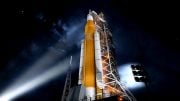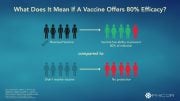
Imagine that you’re driving down the freeway to work. You’re late, and you’re worried that your boss will be angry. The solution? Drive faster. Right? Wrong. Not only do you risk the cost and inconvenience of getting ticketed or, worse, getting into an accident, the fact is that accelerating doesn’t make much sense. That said, most of us would make the same mistake. Why is that?
What is the time-saving bias?
The time-saving bias describes the widespread tendency for people to underestimate time savings when increasing from a low speed and overestimate time savings when increasing from a high speed.
The seminal study
The time-saving bias was first brought to light by Swedish psychologist Ola Svenson in 2008.[1] In one experiment, Svenson asked volunteers to decide which of two road improvement plans would be more efficient in reducing drivers’ average journey time. Most of the volunteers chose a plan that would increase the mean speed from 70 to 110 kilometers per hour over one that would increase the mean speed from 30 to 40 kph.
This choice, however, was incorrect: increasing from the lower speed would actually save more time than increasing from the higher speed (50 minutes vs. 31 minutes for a 100km journey, to be precise). The second experiment extended these findings to a healthcare setting, finding the same faulty reasoning when volunteers considered which one of two clinics to reorganize in order to save more of the doctors’ time for personal contact with patients.
Further research confirmed that we normally get it wrong when we estimate our time savings from increasing our speed[2] and our accident risk from decreasing our speed.[3] A German study calculated that drivers could save between $520 and $1,560 over their driving lifetimes if they avoided the bias and thus the costs of higher fuel consumption and accidents.[4]
The effects of the bias have also been demonstrated at work, in decisions made by managers trying to improve the productivity of production lines,[5] and in those made by managers trying to meet software project deadlines.[6] And it has been demonstrated in consumer choice: whether we are deciding whether to take toll roads, upgrading our internet service,[7] or choosing faster food processors,[8] we invariably choose to pay more to save less (time).
How it works
The “time-saving bias” has been attributed to the fact that we consistently fail to recognize that the relationship between increasing speed and reducing time is not linear. It is, in fact, curvilinear, meaning that increases from lower speeds save more time than similar increases from higher speeds. For example, accelerating from 10 miles per hour to 20 mph will save you 30 minutes on a 10-mile journey, but accelerating from 20 mph to 30 mph — the same speed increase — saves you only 10 minutes, and accelerating from 30 mph to 40 mph, only five minutes. At even higher speeds, the advantage becomes even smaller. Traveling 10 miles at 90 mph rather than 80 mph saves you only 54 seconds, and at 100 mph rather than 90 mph, just 42 seconds. Of course, the numbers are higher over 100-mile journeys, but though you will save yourself five hours if you accelerate from 10 mph to 20 mph, the time you will save by traveling at 100 mph rather than 90 mph is just a paltry seven minutes.
Although it is still unclear which heuristic people generally use to estimate time savings, most of us seem to use either a difference rule or a ratio rule. The difference rule disregards the impact of the initial speed and calculates time saved using the simple difference between the initial and the higher speed: going from 40 mph to 60 mph over 1,000 miles seems equivalent to going from 80 mph to 100 mph. But it’s not. The Ratio rule calculates time saved using the proportion of the speed increase, so that an increase from 40 mph to 60 mph — an increase of 50% — seems equivalent to going from 80 mph to 120 mph, but that’s wrong, too. (The correct answer is that time saved by an increase from 40 mph to 60 mph is equivalent to going from 80 mph to 240 mph.)
Several theories have been put forward to explain our insistence on assuming a linear relationship when we calculate time savings. It could be that linear relationships are pervasive in our everyday lives, making them the default type of relationship we assume for any kind of new relationship we encounter. Alternatively, the problem could stem from the fact that the concept of linearity is developed in early childhood and entrenched in our cognition when we are exposed to formal education. But whether we have a cognitive predisposition toward linearity or whether we acquired the habit in school, we all seem to have a general tendency to judge any given relationship as if it is linear by default.
Experience doesn’t seem to help much — professional taxi drivers are not really any better at estimating time savings than non-professional drivers[9] — and neither does knowing how the math works.[10] In fact, although high sensation-seeking individuals may be more prone to the bias — they tend to get bored and they enjoy the thrill of speeding[11] — research has shown that no matter what our age, education, income, how much we drive, how well we drive, the number of years we have had a license, the number of speeding tickets we have had, the number of accidents we have had, our attitudes, norms, or habits toward driving, our poor intuition will probably lead us astray.[12]
How to avoid it
Unfortunately, there’s no way around it: you have to do the math. Instead of going with your gut and thinking “An increase in speed from 10 mph to 20 mph will save me more/less time than an increase in speed from 20 mph to 30 mph,” you have to think, “An increase in speed from 10 mph to 20 mph will save me X minutes and an increase in speed from 20 mph to 30 mph will save me Y minutes.”
But the fact is, unless car manufacturers actually start installing paceometers — speedometers that also show the minutes required to complete a fixed distance of 10 miles at selected levels of speed[13] — in our cars, most of us are probably doomed to get it wrong. Perhaps the best thing we can do is to remember that the idea that we will reach our destination faster if we travel at a higher speed is, if not false, at least much less true than we imagine.
References:
- Svenson, O. (2008). Decisions among time saving options: When intuition is strong and wrong. Acta Psychologica, 127(2), 501-509.
DOI: 10.1016/j.actpsy.2007.09.003 - Eriksson, G., Svenson, O., & Eriksson, L. (2013). The time-saving bias: Judgements, cognition and perception. Judgment and Decision Making, 8(4), 492-497.
- Fuller, R., Gormley, M., Stradling, S., Broughton, P., Kinnear, N., O’Dolan, C., & Hannigan, B. (2009). Impact of speed change on estimated journey time: failure of drivers to appreciate relevance of initial speed. Accident; analysis and prevention, 41(1), 10-14.
DOI: 10.1016/j.aap.2008.07.013 - Tscharaktschiew, S. (2016). The private (unnoticed welfare cost of highway speeding behavior from time saving misperceptions. Economics of Transportation, 7, 24-37.
DOI: 10.1016/j.ecotra.2016.10.002 - Svenson, O. (2011). Biased decisions concerning productivity increase options. Journal of Economic Psychology, 32(3), 440-445.
DOI: 10.1016/j.joep.2011.03.005 - Fink, L., & Pinchovski, B. (2020). It is about time: Bias and its mitigation in time-saving decisions in software development projects. International Journal of Project Management, 38(2), 99-111.
DOI: 10.1016/j.ijproman.2020.01.001 - Peer, Eyal. (2014). Pay More Save Less: The Paradoxical Time-Saving Bias in Consumers’ Choice. SSRN Electronic Journal.
DOI: 10.2139/ssrn.2383205 - De Langhe, B., & Puntoni, S. (2016). Productivity metrics and consumers’ misunderstanding of time savings. Journal of Marketing Research, 53(3), 396-406.
DOI: 10.1509%2Fjmr.13.0229 - Peer, E., & Solomon, L. (2012). Professionally biased: misestimations of driving speed, journey time and time-savings among taxi and car drivers. Judgment and Decision Making, 7(2),165-172.
- Svenson, O. (1970). A functional measurement approach to intuitive estimation as exemplified by estimated time savings. Journal of Experimental Psychology, 86(2), 204-210.
DOI: 10.1037/h0029934 - Peer, E., & Rosenbloom, T. (2013). When two motivations race: The effects of time-saving bias and sensation-seeking on driving speed choices. Accident Analysis and Prevention, 50, 1135-1139.
DOI: 10.1016/j.aap.2012.09.002 - Peer, E. (2011). The time-saving bias, speed choices and driving behavior. Transportation Research Part F: Traffic Psychology and Behaviour, 14(6), 543-554.
DOI: 10.1016/j.trf.2011.06.004 - Peer, E., & Gamliel, E. (2013). Pace yourself: Improving time-saving judgments when increasing activity speed. Judgment and Decision Making, 8(2), 106-115.









Be the first to comment on "The Time-Saving Bias: Why Speeding Tickets Are an Unnecessary Expense"